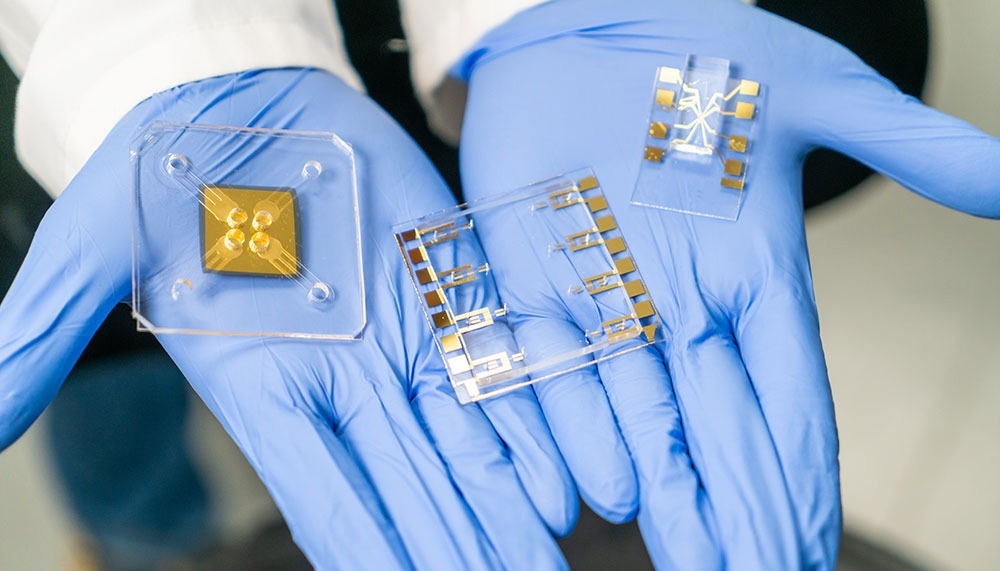The potential to examine the features of individual cells is critical in a diverse spectrum of life science applications, from disease diagnosis and therapeutics to identifying pathogenic bacteria and generating cells for bioproduction. However, precise examination of individual cells is complex due to considerable property variations across cells, even within the same cell population, and rare cell types within a larger population.
 The single-cell electrorotation microfluidic device utilizes an electric field to probe the cell’s properties. Image Credit: Emily Oswald, Texas A&M Engineering
The single-cell electrorotation microfluidic device utilizes an electric field to probe the cell’s properties. Image Credit: Emily Oswald, Texas A&M Engineering
Dr. Arum Han, Texas Instruments Professor II in the Department of Electrical and Computer Engineering at Texas A&M University, and his graduate students and postdoctoral researchers addressed this need by developing a new technology that can precisely evaluate cell properties using a single-cell electrorotation microfluidic device that uses an electric field to probe the cell’s properties.
The system works by first capturing a single cell in a microfluidic device with an electric field, then rotating the single trapped cell with a whirling electric field and detecting the rotation speed. Accurately assessing the dielectric characteristics of a single cell becomes achievable by understanding the input electric field parameters and evaluating the rotation speed.
By knowing how much force was applied and how fast the cell turns, you can extract many basic biophysical properties of cells.”
Dr. Arum Han, Department of Electrical and Computer Engineering, Texas A&M University
Earlier attempts have been made, but this technology is the most appropriate in assessing these properties due to its ability to apply a high-frequency electric field (up to 100 megahertz) and its use of an eight-electrode-pair design to concurrently trap a single cell and apply rotational force to the trapped cell.
The study results will be featured on the cover of the journal Biomedical Microdevices in June 2022.
The full potential of this technique has been realized and used in numerous cell analysis applications. Yuwen Li, a graduate student in Han’s lab and the study’s lead author, is now in charge of further improving the method so that analysis can be carried out at a much greater speed and against numerous cells at once. This is because Yuwen Li has effectively proven that analysis can be precisely accomplished on one cell at a time.